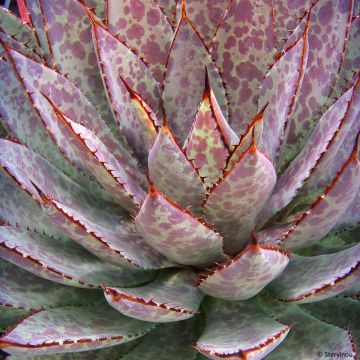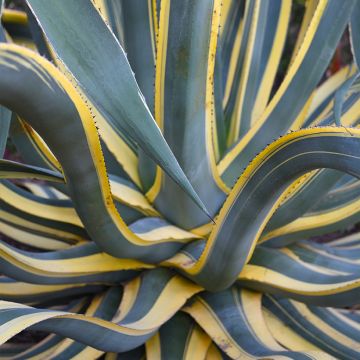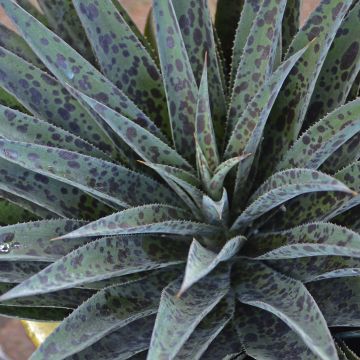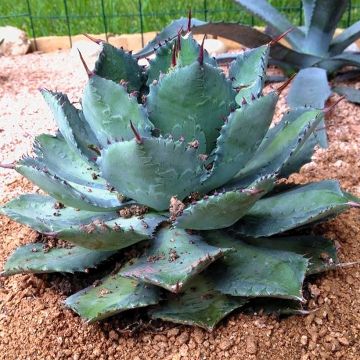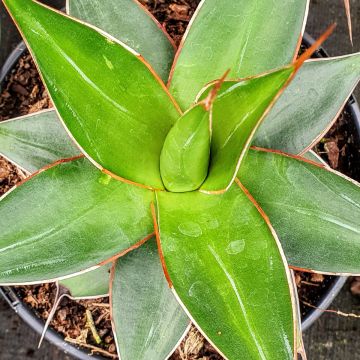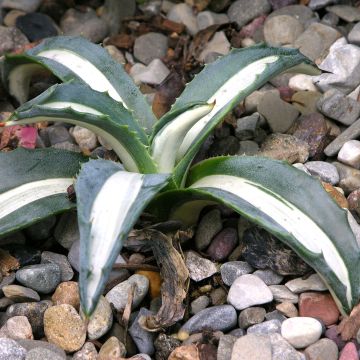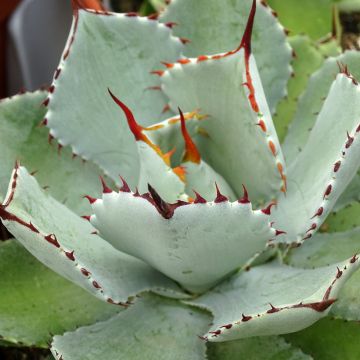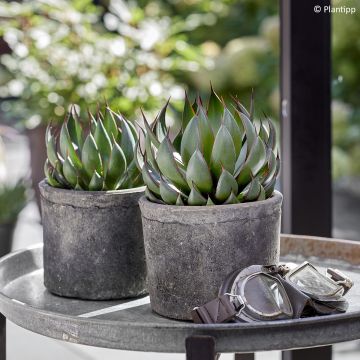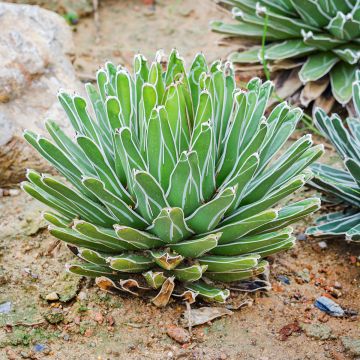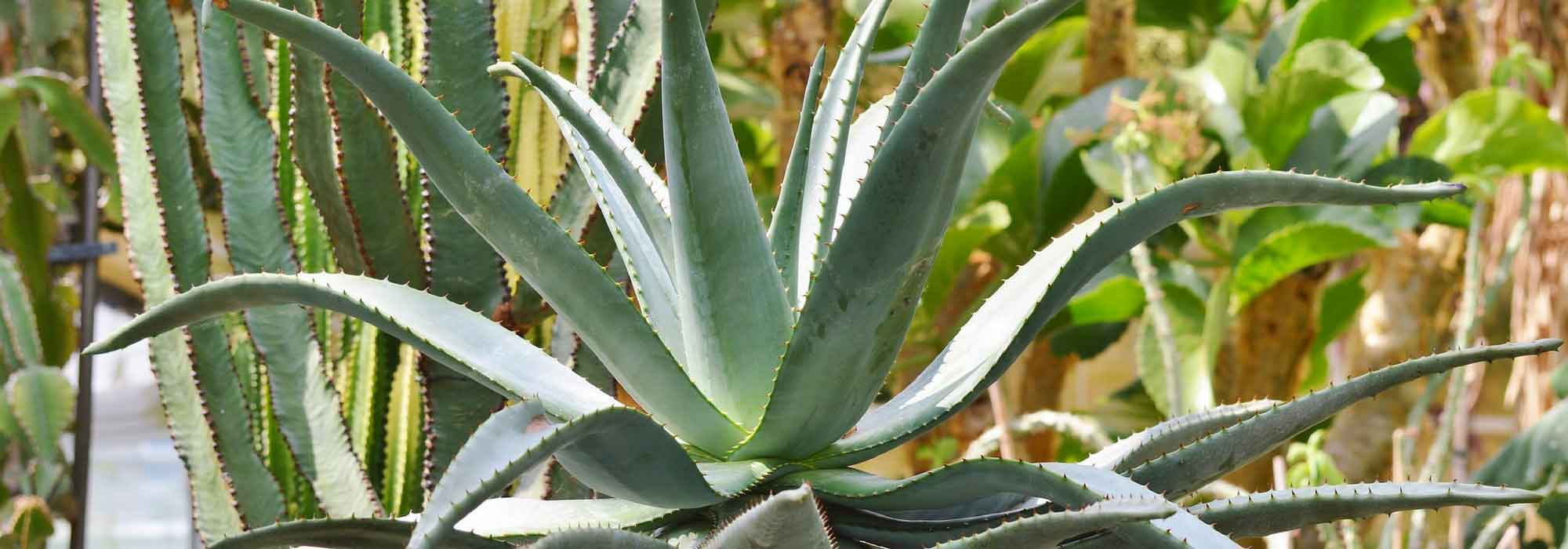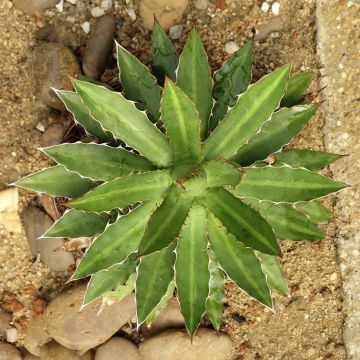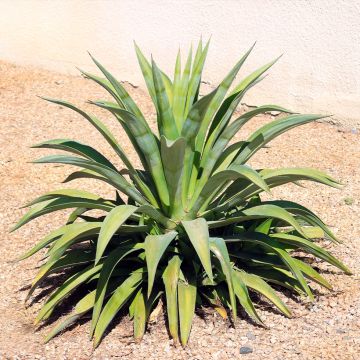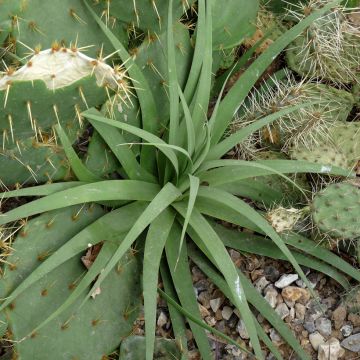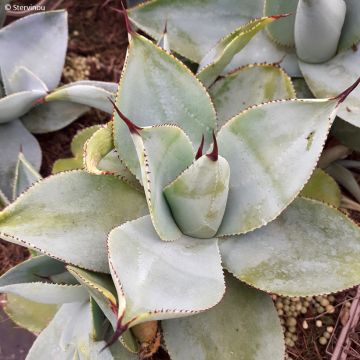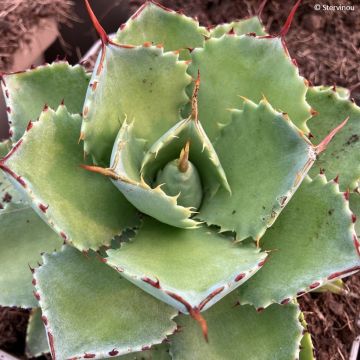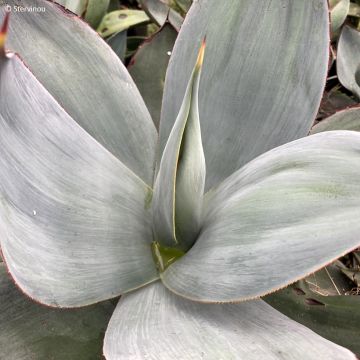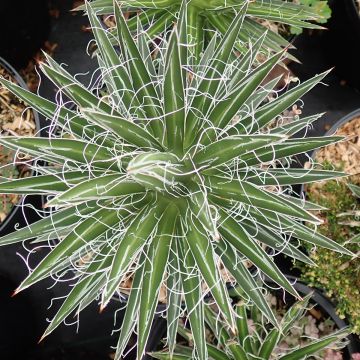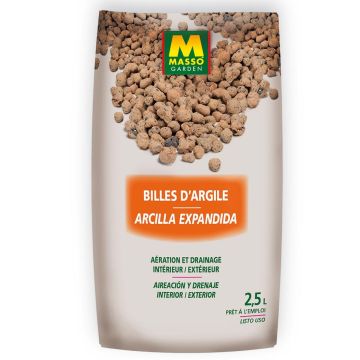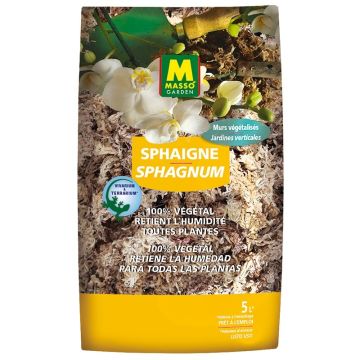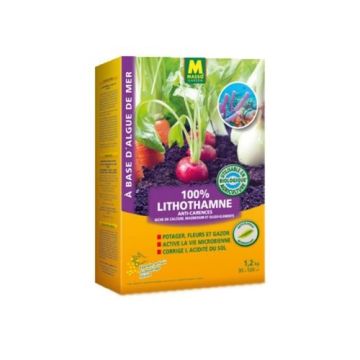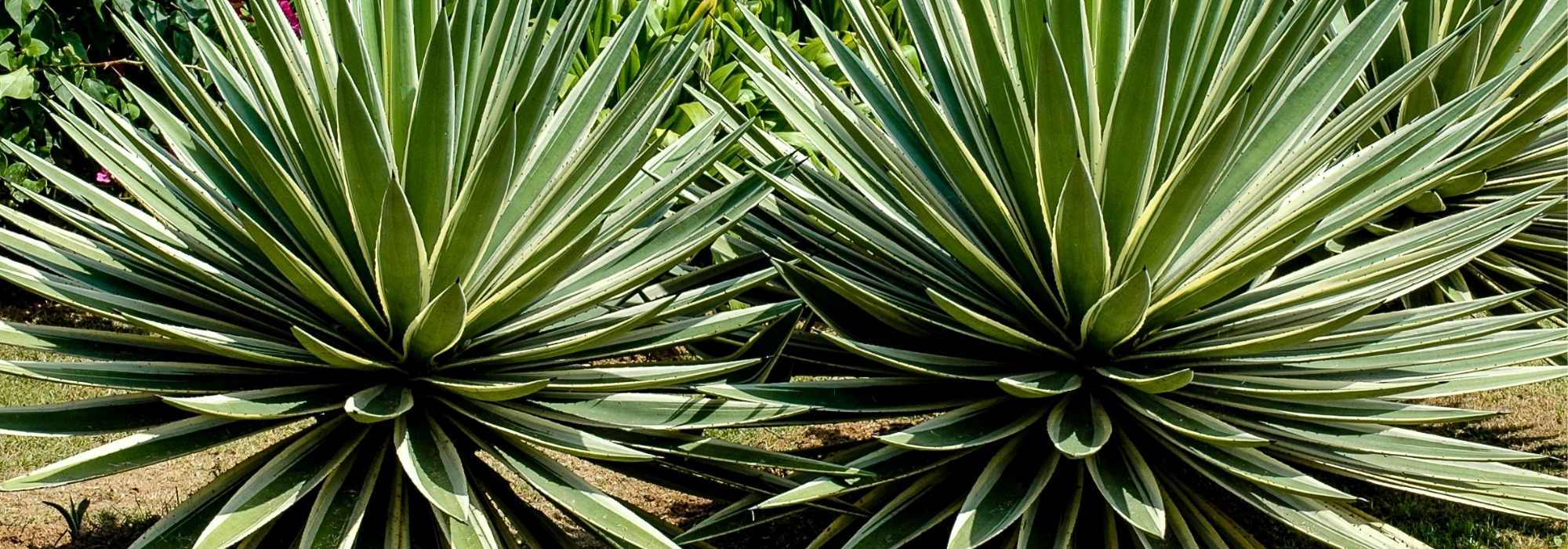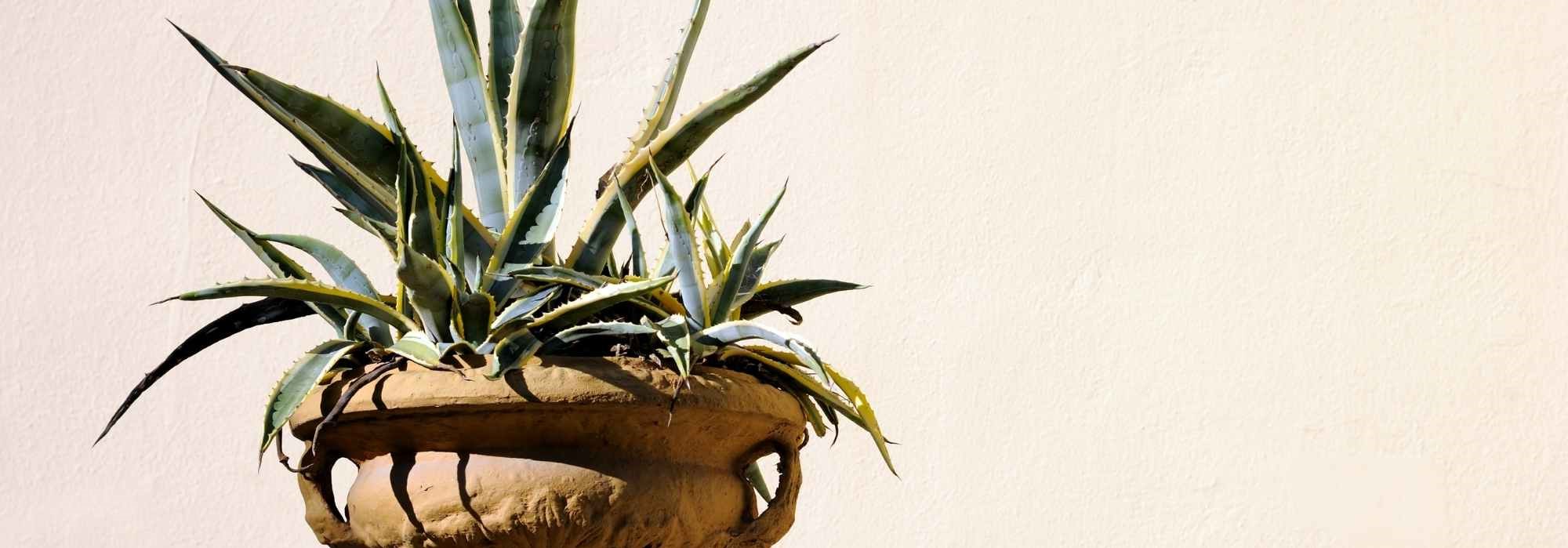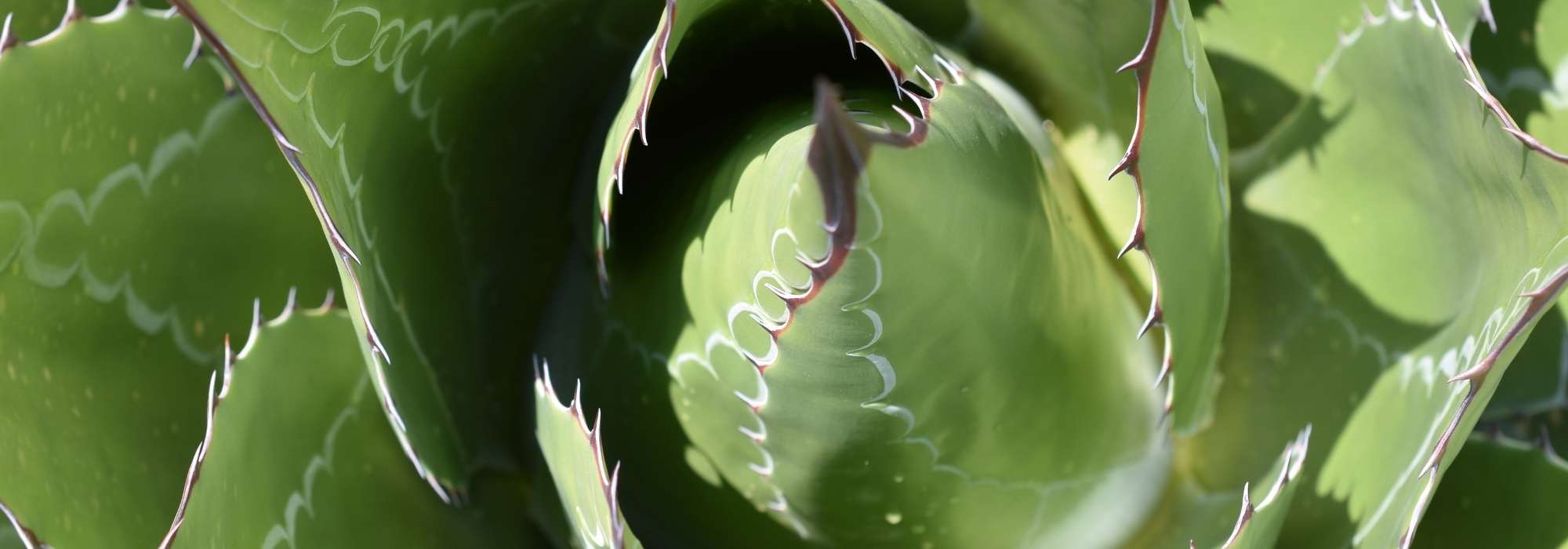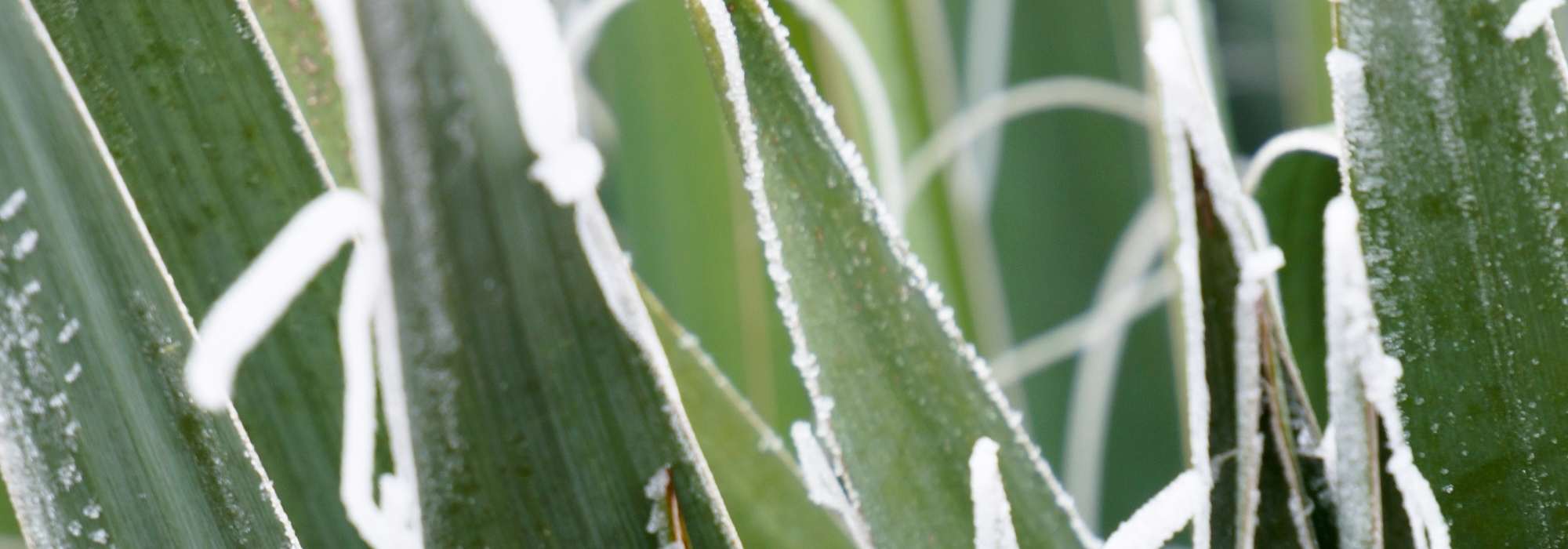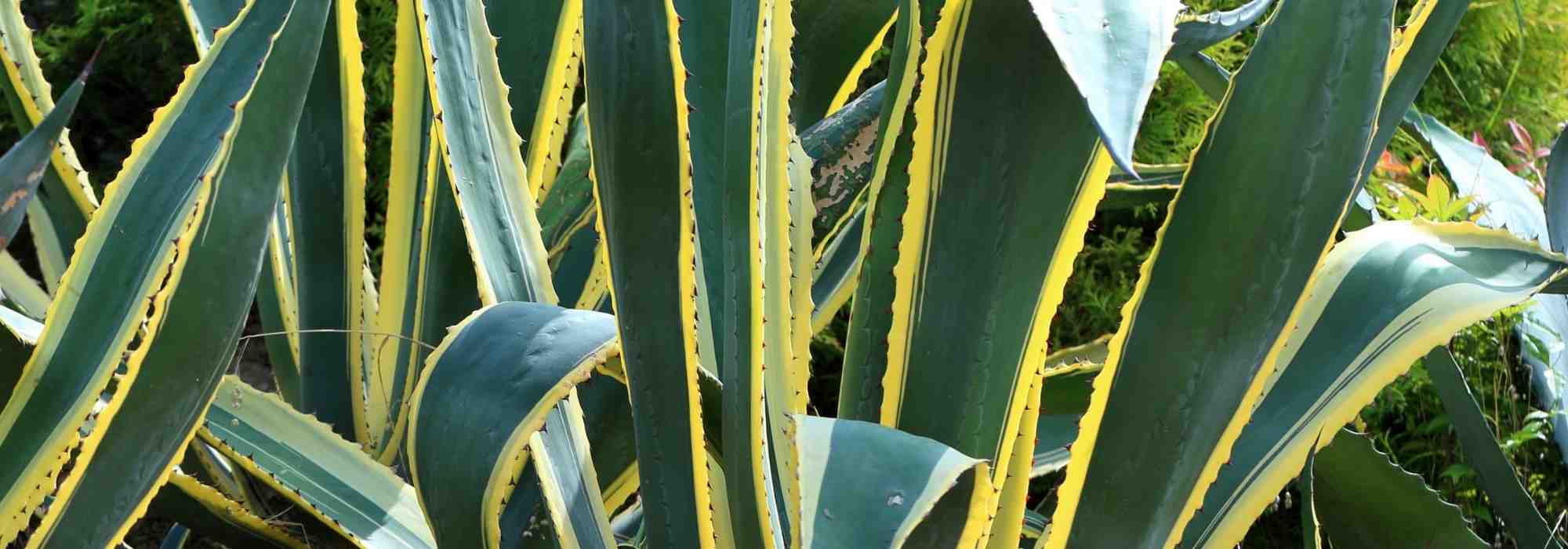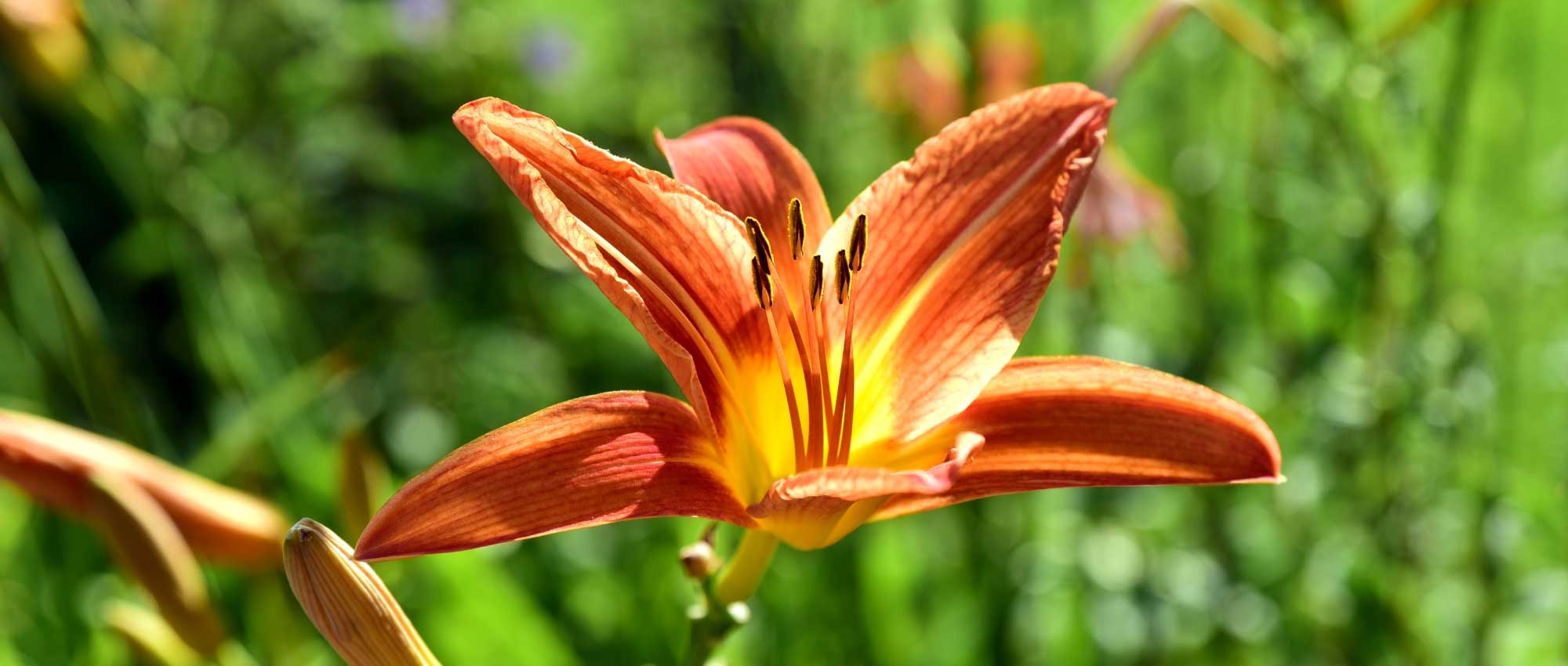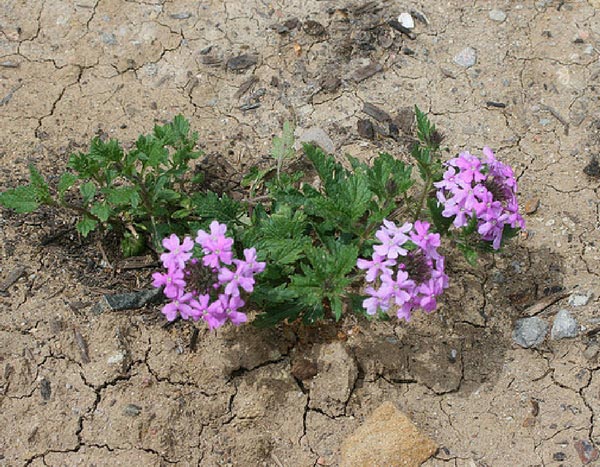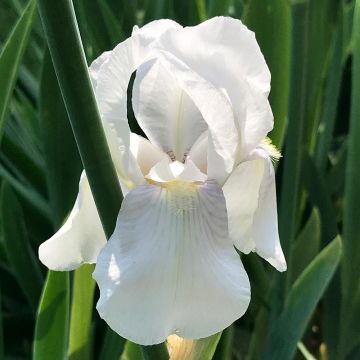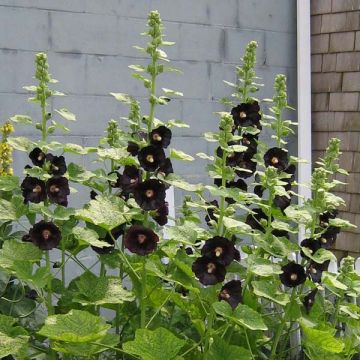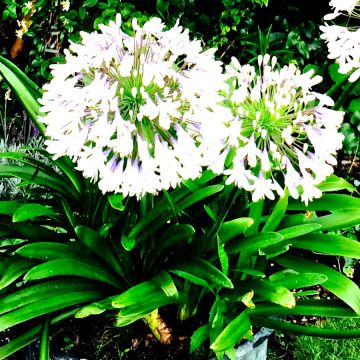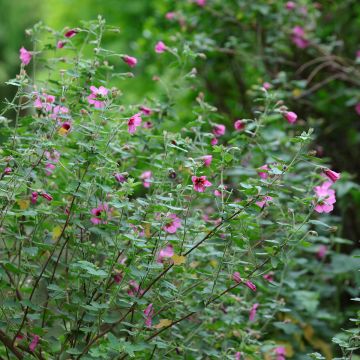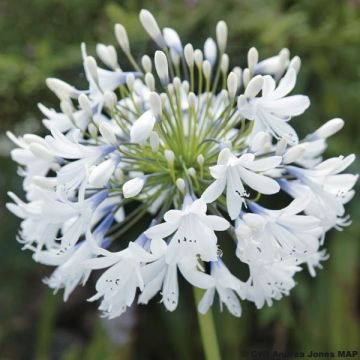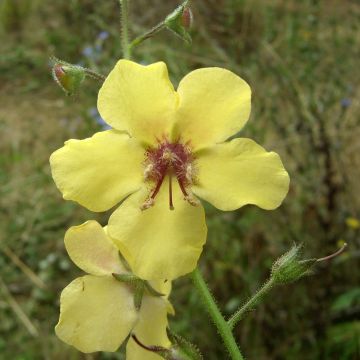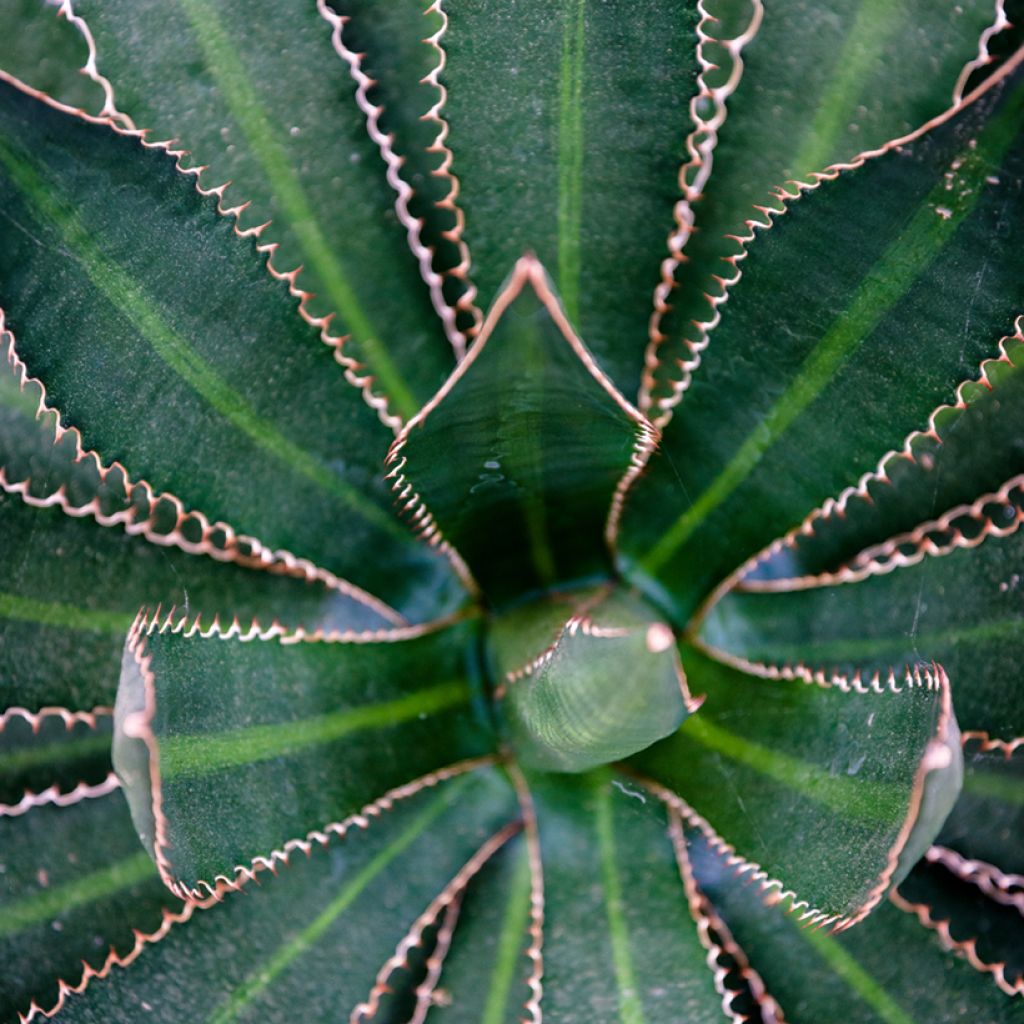

Agave lophantha Splendida
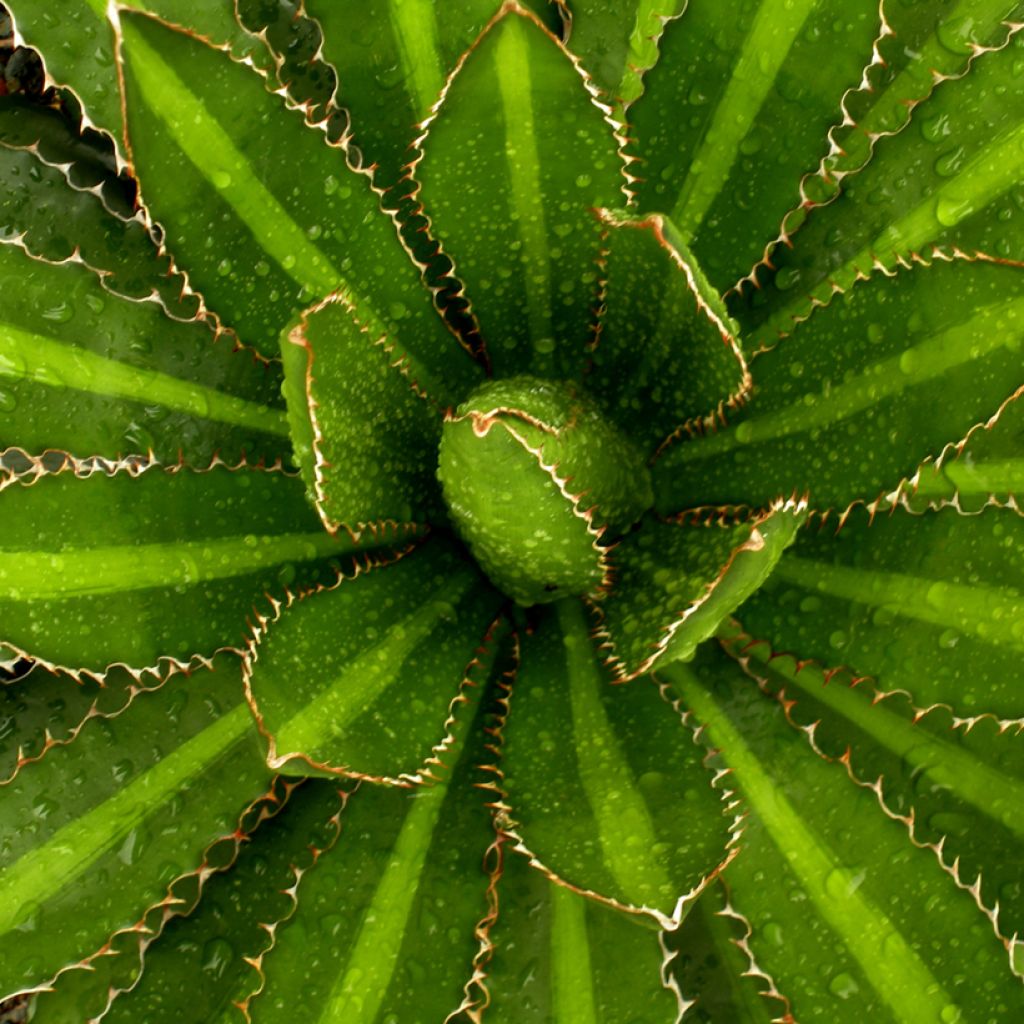

Agave lophantha Splendida
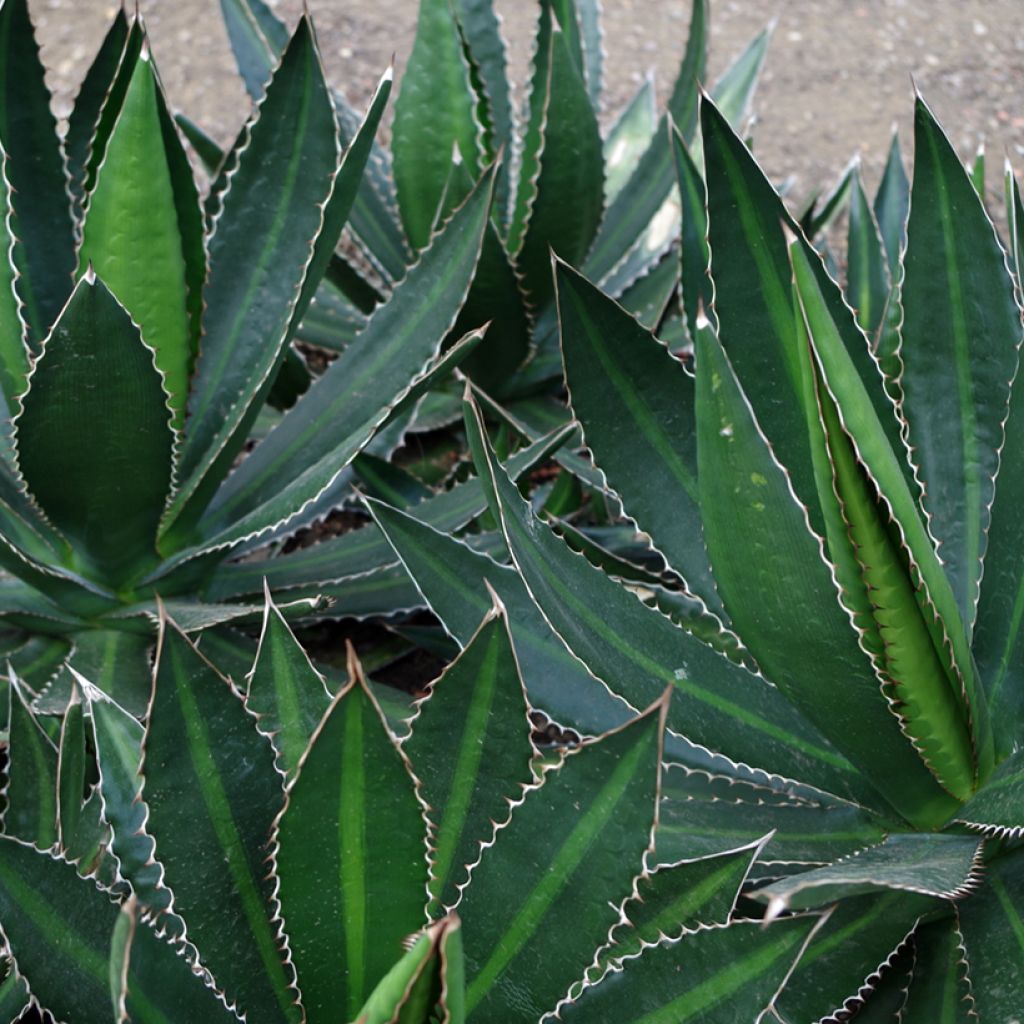

Agave lophantha Splendida
Agave lophantha Splendida
Agave lophantha 'Splendida'
Special offer!
Receive a €20 voucher for any order over €90 (excluding delivery costs, credit notes, and plastic-free options)!
1- Add your favorite plants to your cart.
2- Once you have reached €90, confirm your order (you can even choose the delivery date!).
3- As soon as your order is shipped, you will receive an email containing your voucher code, valid for 3 months (90 days).
Your voucher is unique and can only be used once, for any order with a minimum value of €20, excluding delivery costs.
Can be combined with other current offers, non-divisible and non-refundable.
Why not try an alternative variety in stock?
View all →This plant carries a 12 months recovery warranty
More information
We guarantee the quality of our plants for a full growing cycle, and will replace at our expense any plant that fails to recover under normal climatic and planting conditions.
Would this plant suit my garden?
Set up your Plantfit profile →
Description
Agave lophantha 'Splendida', also known as the Bicolour Agave, is a striking succulent plant that forms a compact and symmetrical rosette. Its rigid foliage displays a striking contrast between deep green and a pale yellow central stripe. Well-suited to both dry rockeries and container cultivation, this radiant variety easily finds its place in a dry garden, a gravel bed, or a sunny terrace. Drought-resistant and hardy down to -11°C at its limit, this variety thrives effortlessly in well-drained soil. It can be grown in the ground in mild climates, but also in large pots to be sheltered during winter in all regions.
Agave lophantha 'Splendida' belongs to the Asparagaceae family. The original species is native to the arid regions of Mexico, particularly along the western coast of the Gulf of Mexico. This 'Splendida' cultivar was introduced by nurseryman Ted Stephens of Nurseries Caroliniana. 'Splendida' stands out for its broader leaves and a more pronounced yellow central stripe. This succulent plant forms a compact and symmetrical rosette, typically reaching 50-60 cm in height and 45 cm in width when planted in the ground. In cultivation, dimensions may vary slightly depending on conditions but remain close to these measurements. In pots, the size is often smaller, with rosettes measuring about 20 to 30 cm in diameter. Agave lophantha 'Splendida' has a relatively slow growth rate. The rigid and lanceolate leaves measure approximately 18 cm long and 5 cm wide. They are deep green with a broad creamy-yellow central stripe, more pronounced on the underside. The margins bear reddish teeth, and each leaf ends in a sharp thorn. Flowering is rare and occurs only after several years in the form of a floral spike that can reach up to 3.5 m in height, adorned with yellow-green flowers. After flowering, the rosette dies, but numerous offsets at the base ensure the plant's continuity. The fruits are dry, inedible capsules. The root system is fibrous and shallow, adapted to well-drained soils.
Although Agave lophantha is less known than other agaves for fibre or fermented beverage production, some local communities use its leaves to make ropes due to the strength of their fibres.
Agave lophantha 'Splendida' makes a statement with its structured habit in an arid bed or rockery, where it contrasts beautifully with softer forms. It pairs naturally with the airy inflorescences of Stipa, whose shifting tones soften its rigid lines, and with Eryngium agavifolium, which extends its sculptural appeal without overshadowing it. In a pot on a sunny terrace, it holds its own but gains intensity alongside tall and majestic Yucca rostrata, and Agave parryi neomexicana, whose blue-grey foliage adds a refreshing touch.
Agave lophantha Splendida in pictures


Flowering
Foliage
Plant habit
Botanical data
Agave
lophantha
'Splendida'
Asparagaceae
Agave univittata Splendida, Agave heteracantha Splendida, Agave lophantha f. latifolia splendida
North America
Other Agave
View all →Planting and care
Agave lophantha 'Splendida' can be grown in the ground under certain conditions, or in a pot.
In the ground: choose a location in full sun with well-drained soil, even poor or stony. This agave can tolerate temperatures down to -11°C if the soil is dry. Planting is best done in spring in a humid climate or in October in a dry and warm climate. Ensure the rosette is level with the soil, without burying the collar, and space each young plant about 60 cm apart to allow for optimal growth. A mineral mulch, such as gravel, can be added to improve drainage and protect the base of the plant.
In a pot, choose a container at least 60 cm deep and wide, with drainage holes to ensure good water flow. Use a very well-draining substrate, composed of 50% compost and 50% draining materials such as clay pebbles or pumice. Place the agave in full sun, sheltered from cold draughts. During the growth season, water moderately, about once a week, allowing the substrate to dry out between waterings. In winter, reduce watering and bring the pot indoors to a bright, airy, and cool place, such as a conservatory or unheated greenhouse, especially if temperatures drop below -4°C.
Planting period
Intended location
Care
Planting & care advice
This item has not been reviewed yet - be the first to leave a review about it.
Similar products
Haven't found what you were looking for?
Hardiness is the lowest winter temperature a plant can endure without suffering serious damage or even dying. However, hardiness is affected by location (a sheltered area, such as a patio), protection (winter cover) and soil type (hardiness is improved by well-drained soil).

Photo Sharing Terms & Conditions
In order to encourage gardeners to interact and share their experiences, Promesse de fleurs offers various media enabling content to be uploaded onto its Site - in particular via the ‘Photo sharing’ module.
The User agrees to refrain from:
- Posting any content that is illegal, prejudicial, insulting, racist, inciteful to hatred, revisionist, contrary to public decency, that infringes on privacy or on the privacy rights of third parties, in particular the publicity rights of persons and goods, intellectual property rights, or the right to privacy.
- Submitting content on behalf of a third party;
- Impersonate the identity of a third party and/or publish any personal information about a third party;
In general, the User undertakes to refrain from any unethical behaviour.
All Content (in particular text, comments, files, images, photos, videos, creative works, etc.), which may be subject to property or intellectual property rights, image or other private rights, shall remain the property of the User, subject to the limited rights granted by the terms of the licence granted by Promesse de fleurs as stated below. Users are at liberty to publish or not to publish such Content on the Site, notably via the ‘Photo Sharing’ facility, and accept that this Content shall be made public and freely accessible, notably on the Internet.
Users further acknowledge, undertake to have ,and guarantee that they hold all necessary rights and permissions to publish such material on the Site, in particular with regard to the legislation in force pertaining to any privacy, property, intellectual property, image, or contractual rights, or rights of any other nature. By publishing such Content on the Site, Users acknowledge accepting full liability as publishers of the Content within the meaning of the law, and grant Promesse de fleurs, free of charge, an inclusive, worldwide licence for the said Content for the entire duration of its publication, including all reproduction, representation, up/downloading, displaying, performing, transmission, and storage rights.
Users also grant permission for their name to be linked to the Content and accept that this link may not always be made available.
By engaging in posting material, Users consent to their Content becoming automatically accessible on the Internet, in particular on other sites and/or blogs and/or web pages of the Promesse de fleurs site, including in particular social pages and the Promesse de fleurs catalogue.
Users may secure the removal of entrusted content free of charge by issuing a simple request via our contact form.
The flowering period indicated on our website applies to countries and regions located in USDA zone 8 (France, the United Kingdom, Ireland, the Netherlands, etc.)
It will vary according to where you live:
- In zones 9 to 10 (Italy, Spain, Greece, etc.), flowering will occur about 2 to 4 weeks earlier.
- In zones 6 to 7 (Germany, Poland, Slovenia, and lower mountainous regions), flowering will be delayed by 2 to 3 weeks.
- In zone 5 (Central Europe, Scandinavia), blooming will be delayed by 3 to 5 weeks.
In temperate climates, pruning of spring-flowering shrubs (forsythia, spireas, etc.) should be done just after flowering.
Pruning of summer-flowering shrubs (Indian Lilac, Perovskia, etc.) can be done in winter or spring.
In cold regions as well as with frost-sensitive plants, avoid pruning too early when severe frosts may still occur.
The planting period indicated on our website applies to countries and regions located in USDA zone 8 (France, United Kingdom, Ireland, Netherlands).
It will vary according to where you live:
- In Mediterranean zones (Marseille, Madrid, Milan, etc.), autumn and winter are the best planting periods.
- In continental zones (Strasbourg, Munich, Vienna, etc.), delay planting by 2 to 3 weeks in spring and bring it forward by 2 to 4 weeks in autumn.
- In mountainous regions (the Alps, Pyrenees, Carpathians, etc.), it is best to plant in late spring (May-June) or late summer (August-September).
The harvesting period indicated on our website applies to countries and regions in USDA zone 8 (France, England, Ireland, the Netherlands).
In colder areas (Scandinavia, Poland, Austria...) fruit and vegetable harvests are likely to be delayed by 3-4 weeks.
In warmer areas (Italy, Spain, Greece, etc.), harvesting will probably take place earlier, depending on weather conditions.
The sowing periods indicated on our website apply to countries and regions within USDA Zone 8 (France, UK, Ireland, Netherlands).
In colder areas (Scandinavia, Poland, Austria...), delay any outdoor sowing by 3-4 weeks, or sow under glass.
In warmer climes (Italy, Spain, Greece, etc.), bring outdoor sowing forward by a few weeks.






























